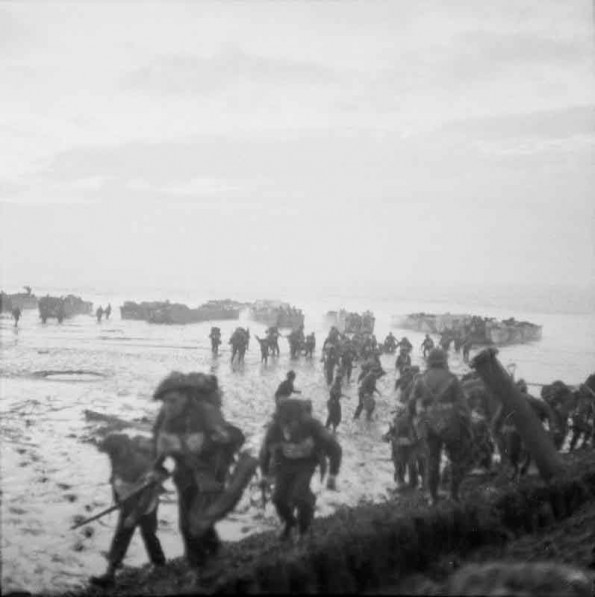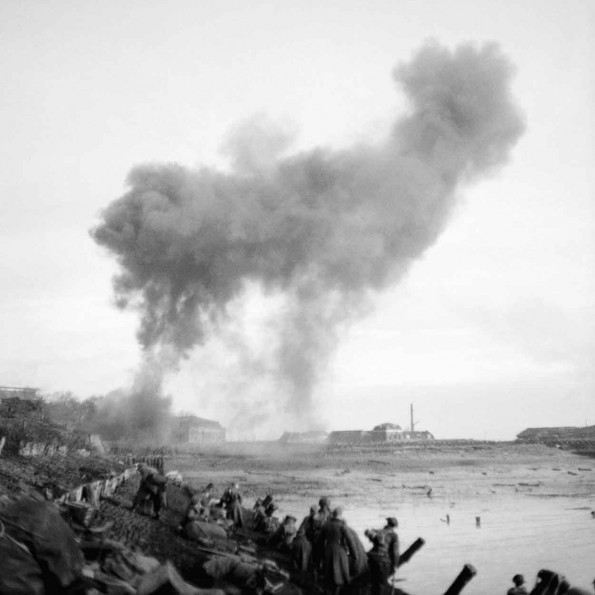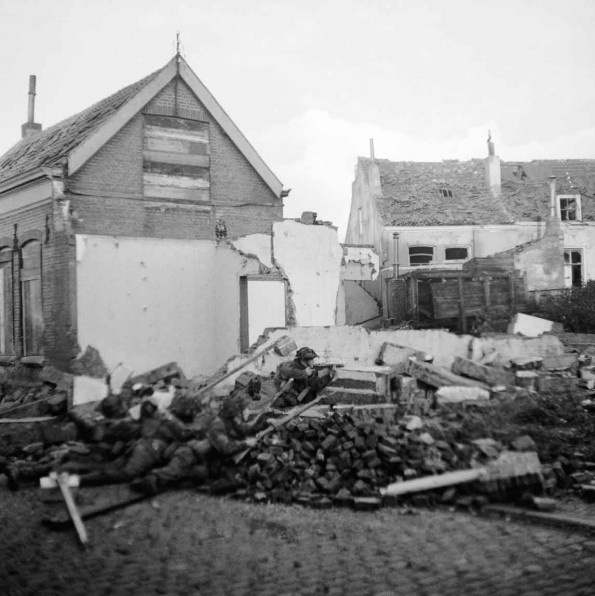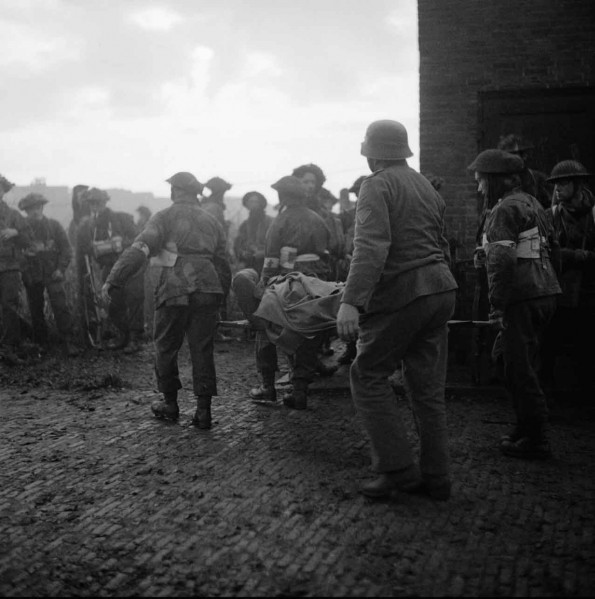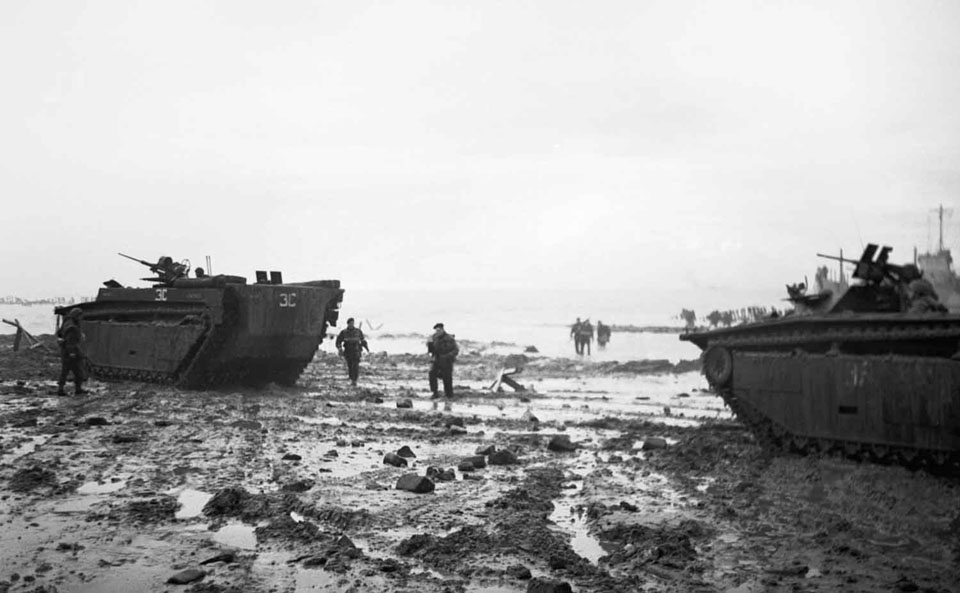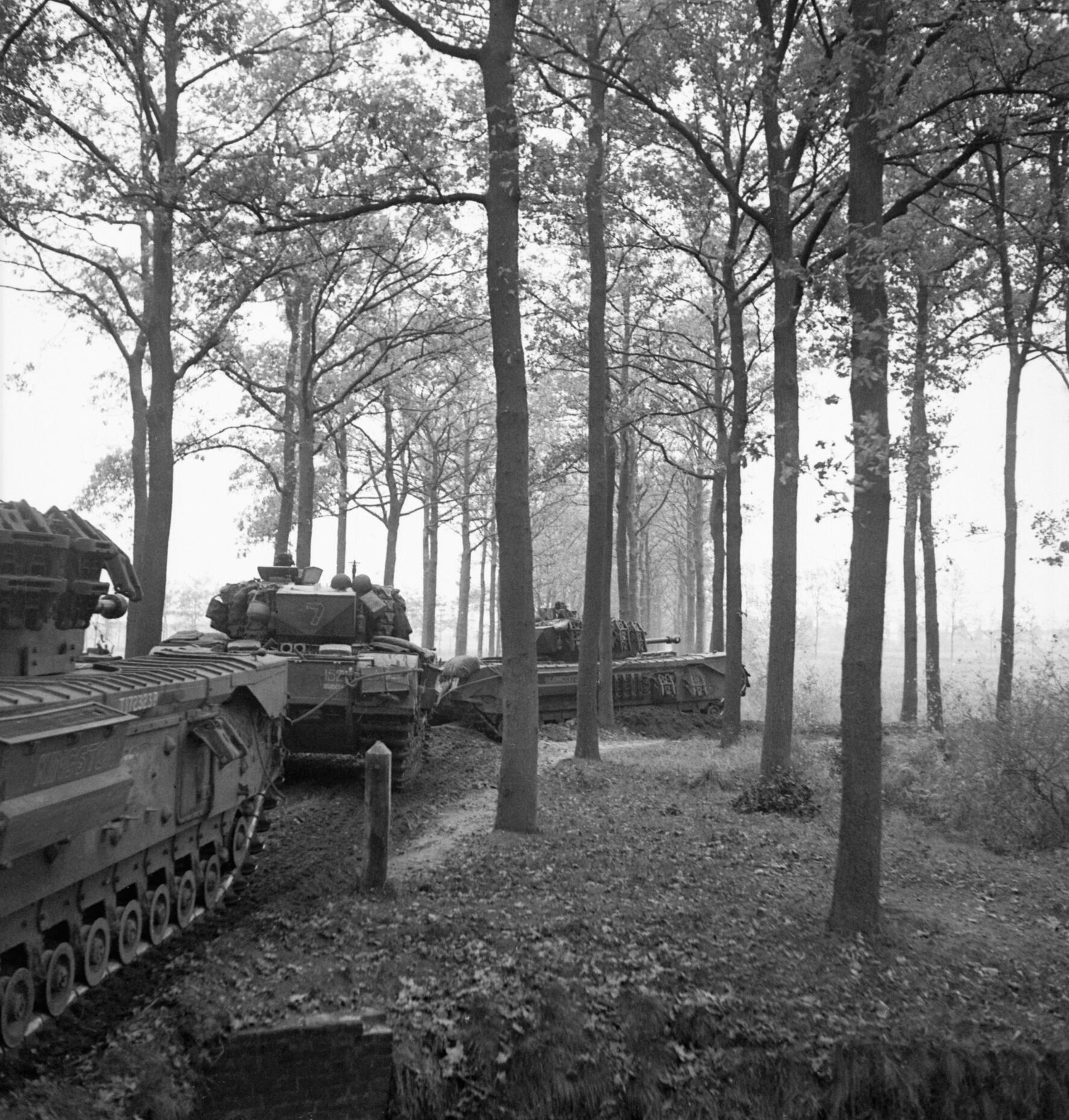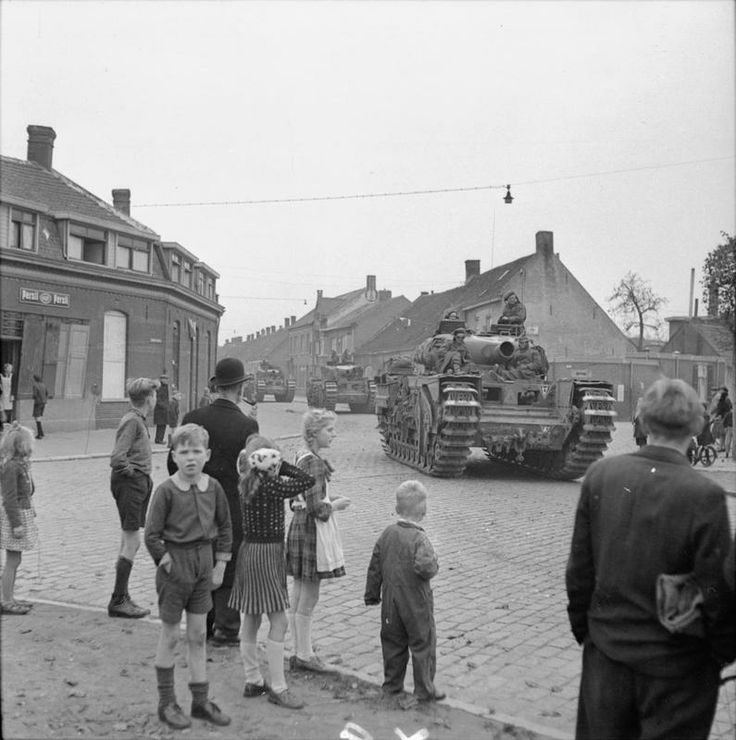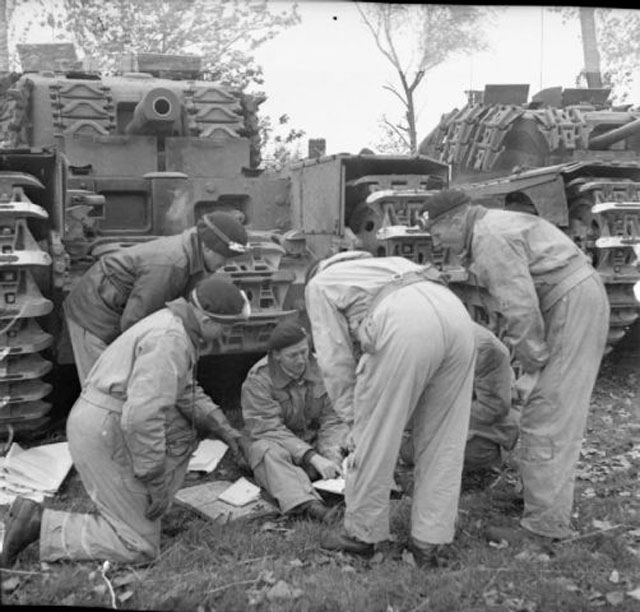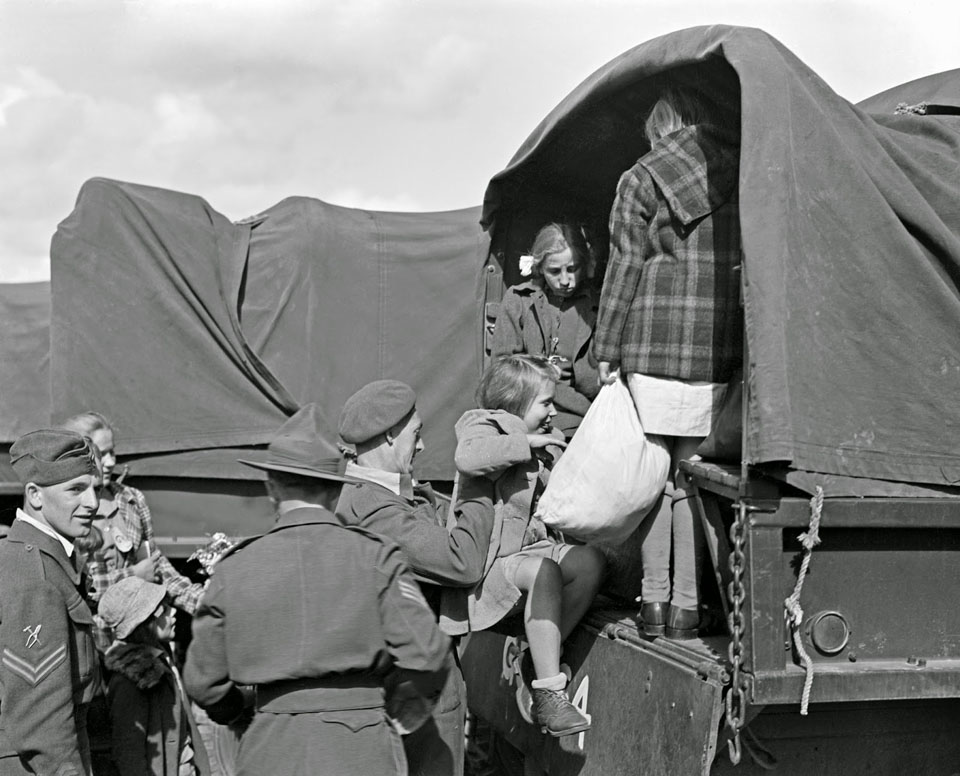Air Operations, Bonin and Volcano Islands
- 12 30th Heavy Bomb Group B-24s based at Guam attack Chichi Jima, Haha Jima, and Iwo Jima while escorting US Navy photo-reconnaissance aircraft.
- 8 B-24s attack shipping near Iwo Jima.
- During the night, an 11th Heavy Bomb Group B-24 attacks Iwo Jima while conducting a snooper mission.
Air Operations, CBI
BURMA- 9 10th Air Force B-25s attack bridges at three locations.
- More than 70 10th Air Force fighter-bombers attack Lagaw and Loiwing, two bridges, rail targets of opportunity on the Indaw-Naba line, and Japanese Army positions around Bhamo, Hantet, Shwegu, and Si-in.
- Nearly 70 14th Air Force fighter-bombers support Chinese Army ground forces near Lungling.
- 13 fighter-bombers attack river and rail traffic between Kunghsien and Loyang.
Air Operations, East Indies
FEAF B-25s and P-38s attack Namlea, Boeroe.
[Air Operations, Europe
RAF BOMBER COMMANDDaylight Ops:
- 226 Lancasters and 2 Mosquitos of No. 5 Group along with 14 Mosquitos of No. 8 Group attempt to attack the Meerbeck oil plant at Homberg. The marking is scattered and only 159 of the Lancaster crews attempt to bomb.
- 1 Lancaster is lost.
- 1 Hudson is on a Resistance operation and there are 2 RCM sorties.
- 202 Halifaxes, 74 Lancasters and 12 Mosquitos of Nos. 6 and 8 Groups are sent to Oberhausen. The target area is cloud-covered and the bombing is not concentrated.
- 3 Halifaxes and 1 Lancaster are lost.
- 49 Mosquitos are sent to Berlin, 12 to Cologne and 4 each to Karlsruhe and Mülheim, 25 aircraft are on Resistance operations, and there are 46 Mosquito patrols and 28 RCM sorties.
- There are no losses.
GERMANY:
- 113 1st Bomb Division B-17s and 143 2nd Bomb Division B-24s attack synthetic-oil plants at Gelsenkirchen.
- 60 1st and 3rd Bomb Division B-17s attack a marshalling yard at Hamm, a rail bridge, and the city of Koblenz.
- 1 of 286 VIII Fighter Command escort fighters is lost
ETO:
- 9th Air Force fighters and fighter-bombers attack rail lines and bridges in and around the battle area.
ITALY:
- XXII TAC P-47s attack roads, bridgtes and rail lines throughout northern Italy, and especially in the Po River valley.
AUSTRIA:
- 15th Air Force heavy bombers attack a diesel-engine factory, and ordnance factory, and a marshalling yard at Vienna; marshalling yards at Graz; a marshalling yard at Gussing; a tank factory at Kapfenburg; and various communications targets.
- 15th Air Force heavy bombers attack marshalling yards at Cakovec and Ljubljana.
Air Operations, New Guinea
V Bomber Command B-25s and A-20s attack Babo.
[Air Operations, Pacific
- The first of 9,000 paper balloons, carrying bombs, are released near Tokyo by army forces. A small number do reach North America, but only 6 people are killed as a result.
- The B-29 'Tokyo Rose' of the 3rd Photo Reconnaissance Sqn makes the first reconnaissance flight over Tokyo since 1942.
Air Operations, Philippines
- Two large predawn attacks by Japanese Navy bombers crater the Tacloban airfield runway on Leyte, sink a US destroyer, damage 3 cargo vessels, and destroy 1 P-38.
- FEAF B-24s attack the Cebu airfield at Cebu City and the Alicante airfield on Negros and supply dumps at Del Monte, Mindanao.
- 42 8th Fighter Group P-38s based on Morotai attack the Alicante, Bacolod and Carolina airfields on Negros.
- P-47s attack ground targets and shipping in the Sulu Archipelago.
- 4 5th Heavy Bomb Group B-24s are lost when they are intercepted by Japanese Army fighters over the Alicante airfield on Negros.
- 49th Fighter Group P-38s down 2 D3A 'Val' dive bombers and 1 Ki-43 'Oscar' fighter near Tacloban, Leyte at 0940 hours.
- 8th Fighter Group P-38s down 1 Ki-46 'Dinah' reconnaissance plane, 1 D3A 'Val' dive bomer, 1 K-61 'Tony' fighter, and 3 Ki-43 'Oscar' fighters over Negros at 1020 hours.
- 35th Fighter Group P-47s down 2 A6M Zeros and and 2 B5N 'Kate' torpedo bombers over Cebu at 1020 hours.
- A 49th Fighter Group P-38 downs 1 A6M Zero over Dulag, Leyte at 1100 hours.
- A 475th Fighter Group P-38 downs 1 Ki-44 'Tojo' fighter near San Pablo, Leyte at 1145 hours.
- 49th Fighter Group P-38s down 6 A6M Zeros and 3 Ki-43 'Oscar' fighters over Leyte and and a Japanese Navy convoy in Ormoc Bay between 1700 and 1735 hours.
- Owing to increasing Japanese air activity through the day, plus the ultimately erroneous threat of an attack by Japanese Navy surface forces, Task Group 38.3, on its way to Ulithi Atoll to reprovision, is ordered to return to the Leyte area to bolster the USN and USAAF combat air units there. Also, Task Group 38.1, reprovisioning at Ulithi Atoll, is ordered to depart immediately for Leyte. Task Group 38.4, also at Ulithi Atoll, is ordered to remain owing to the damage sustained earlier by the USS Franklin and the USS Belleau Wood.
Battle of the Atlantic
U-483 torpedoes the British frigate Whitaker off Malin Head, Ireland. The explosion detonates the forward magazine blowing away everything forward of the bridge. 93 on board are lost. She is towed to Londonderry, but is declared a total loss.
[Eastern Front
Kecskemet, 50 miles southeast of Budapest, is taken by troops of the 3rd Ukraine Front.
SOUTHERN SECTORKecskemet falls to the 46th Army as the XXIV Panzer Corps falls back. The Soviet troops then push northwest toward Budapest while the 7th Guards Army aims for Vac. German forces though are building up north of Kecskemet as the 23rd and 24th Panzer Divisions, 13th Panzer, Feldherrnhalle Panzer Grenadier Division and 8th SS Cavalry Division Florian Geyer begin to concentrate in order to secure the line of the Tisza River.
[Greece
Distribution of food begins in and around Athens. Because of the war food imports to Greece have of course been drastically reduced and much damage has been done to the indigenous agriculture. Famine-relief measures are therefore highly necessary. The Germans evacuate Florina. All of their troops except isolated pockets and island garrisons which include Rhodes, western Crete and the smaller islands of Leros, Kos, Piskopi and Simi, will be gone by the middle of the month. Eventually these garrisons surrender, Rhodes on May 1, 1945 and the others on May 9, 1945.
[Italy
In the 8th Army sector the 10th Indian Div, British V Corps, cross the Rabbi near Collina, taking Gusignano. The 4th Div is held up a short way from Forli airfield.
[Pacific
- The US submarine Atule (SS-403) attack a Japanese convoy in Luzon Strait and sinks the transport Asama Maru (16,975t).
- The US submarine Blackfin (SS-322) attacks a Japanese convoy and sinks the auxiliary vessel Caroline Maru and the transport No.12 Unkai Maru (2745t) in Mindoro Strait.
- The US submarine Ray (SS-271) sinks the Japanese merchant tanker No.7 Horai Maru (865t) off the west coast of Mindorol.
- The British submarine Storm sinks the Japanese schooner No.3 Goenong Perak in the Gulf of Boni.
Philippines
The Japanese forces receive 2,000 reinforcements at their base at Ormoc on Leyte from fast Japanese transports. Gen Sosaku Suzuki now commands the 35th Army which includes the original 16th Div and the newly arrived 30th and 102nd. In the American advance 7th Div takes Baybay. Offshore one US destroyer, the USS Abner Road (DD-526), is sunk and five badly hit, including the Anderson (DD-411), the Claxton (DD-571), the Bush (DD-529), the Killen (DD-593) and the Ammen (DD-527), in suicide and conventional bombing attacks.
[Western Front
The battle for Walcheren begins. There are landings by a brigade of British 52nd Div and 3 commando groups of the Canadian II Corps. Some units advance along the coast to the northeast, others move off southeast toward Flushing. Flushing is taken by one landing force while the other is fighting near Westkapelle. Much of the planned air support has to be cancelled because of the bad weather. The landings receive gunfire support from the battleship Warspite and two monitors as well as other vessels. 9 of the 28 landing craft taking part in this operation on its east flank are lost on the approach and 11 seriously damaged, including gun-armed ships which have been intended to give close support. The German garrison of the island is the 70th Inf Div commanded by Gen Wilhelm Daser.
In the US 3rd Army sector, the 5th Div, XX Corps, re-occupies the Arnaville bridgehead south of Metz, relieving the 95th Div. The XII Corps carries out limited attacks with units of the 8th Div to cross the Seille River, capturing Létricourt and Abacourt.
The French 2nd Arm Div, XV Corps, US 7th Army, enters Bertrichamps. The US 100th Div arrives in the VI Corps sector to replace the 45th Div on the north flank. The 15th Regt of the 3rd Div occupies La Bourgonce, northwest of St Díe.
[World Affairs
The International Civil Aviation Conference is held in Chicago.
[Yugoslavia, Politics
Tito and the prime minister of the exile government sign agreements on the future constitution of the country.
[Images from November 1, 1944
|
|
|
|
|
|
|
|
|
|
Churchill Tanks Assembling for the Advance |
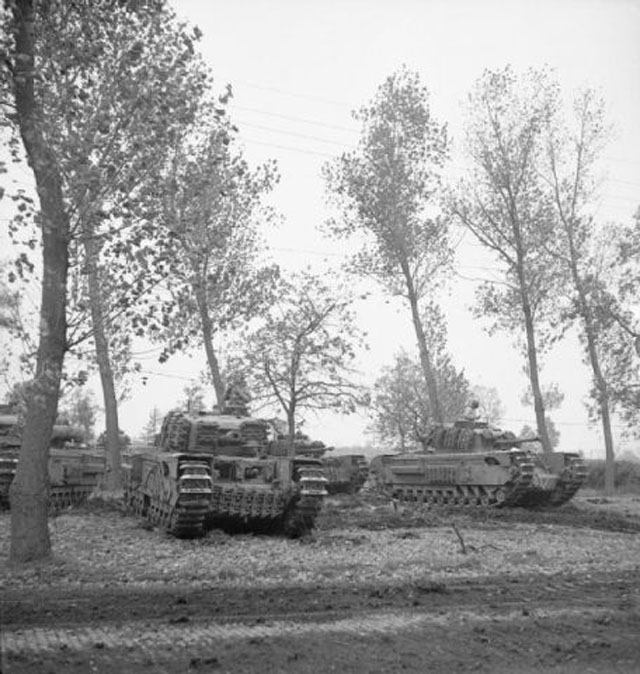 |
